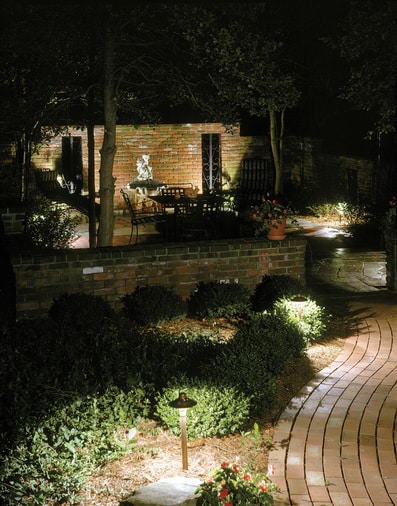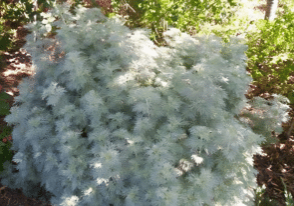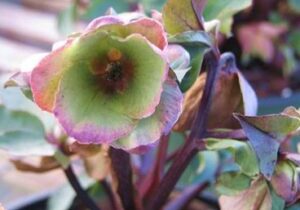by Joe Golsen


Joe Golson CID
Horticulture Department,
W.P. Law, Inc.
Joe received his Plant Sciences degree from Clemson University in 1977 and has worked in the landscape and irrigation industry for more than 35 years. In 1990, he joined W.P. Law, Inc and has served as a team leader, designer, and inside sales representative for the Horticultural Department. Joe has also served as an adjunct teacher at Midlands Technical College since 1999.

I know this sounds cliché, but the Fall is an excellent season to contemplate installing low voltage landscape lighting. Shorter days and longer nights make us yearn for the extra hours of sunlight that we enjoyed only a few months earlier. Also, to some extent, all of us suffer from the effects of SAD (Seasonal Affect Disorder). Illuminating the landscape during the evening helps to lift our spirits.
Let us take a moment to briefly explore design ideas and examine some of the products that produce a beautiful nighttime display.
When designing a landscape, attention is focused on highlighting the architecture, dividing public areas from the private ones and creating unity. The designer considers flow, safety and harmony between the different elements, whether it is plants or hardscape. Landscape lighting utilizes the same concepts.
Unlike viewing the landscape during the day, particular attention must be paid to fixture placement, lamp color (temperature), and the textures of materials being illuminated. Because daylight is absent, the environment being lit is surrounded by darkness. Therefore special care must be used in following these simple ideas. Otherwise the result is a flat looking design.
Beginning the design process starts with the focal point of the landscape - the home. Look at the architecture, the texture of the building materials, and landscape materials in the foundation plantings. Think about using fixtures that wash the walls or cast light into dark corners and highlight doorways and trim. Moving away from the home, investigate illuminating shrubs, especially those plants or plantings that direct a visitor to the entrance, or those plants that accent the architecture. Still moving further from the foundation plantings are hardscapes such as walks and drives. These are one of the most difficult areas to illuminate. Careful light placement in these areas avoids the “landing strip” appearance. If possible, wash the surface of a walk with a ground level directional light. This will cast light horizontally across the walk and is far better than lining up path lights. With a little planning, ambient light spilling from the foundation plantings and the home may be enough to create a glow to gently illuminate a walk and provide safety.
Light driveways in the same manner or combine with down lighting from nearby trees. The last items to light are the lawn areas, front and back. First frame the home by uplighting large trees in the front, back and sides. Next provide light in excessively dark areas of the lawn, then use accent lighting, either uplighting, area, or directional lighting to highlight points of interest.
Choose fixtures and lamps that will blend into the landscape, have longevity, are easy to install, repair, require the least amount of cable, wire connections, and are energy efficient. Given these facts, fixtures utilizing LED technology are by far the best bet when considering low voltage outdoor lighting.
There are two categories of lighting: integrated and retrofit. Integrated fixtures encapsulate the LED lamp(s) in resin that prevents dirt and water intrusion. This extends the overall lifespan of the lamp. Integrated fixtures may seem more expensive at first glance, but they are more durable and have longer warranties than their retrofit counterparts.
For those on a budget, there are several options to integrated fixtures. One is to install a retrofit LED light in a blank fixture of choice. This is much like assembling the ordinary tungsten or halogen style unit. Conversely, an existing system can be re-lamped using LEDs of the desired wattage and color temperature. As with tungsten or halogen bulbs, the temperature denotes the warmth or coolness of the light source and is measured in degrees Kelvin (K).
The final item required is the power supply. Since LED’s sip power, transformers of lower wattages take the place of their older counterparts of 900 watts and above. It is not unlikely to find an LED system operating on mere 100-300watt sources. Adding a timer and a photo-cell complete the system.
Now you can sit back sip a warm cup of cocoa while enjoying your landscape in a slice of evening sunshine.











